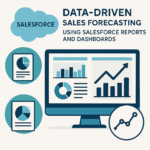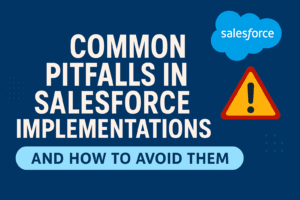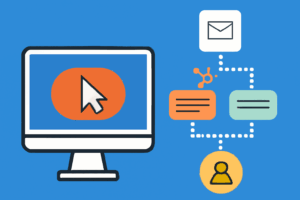BLOG
Mastering Segmentation & Targeting Strategies for a Killer Campaign
Picture this: you’ve come up with great content, your assets are crisp, and you’re ready to hit send. You send out your campaign along a carefully plotted timeframe, after researching hours on the best send times. You’ve got thousands of contacts in your database who are ready to be engaged. You’ve done everything you think is necessary for an effective campaign strategy. You hit send and wait…
… but alas, everything comes crashing down — your engagement rates aren’t what you expected them to be.
Delivering the right message to the right audience at the right time is crucial for your campaign’s success. This is where segmentation and targeting strategies come into play. Your marketing automation and customer relationship management (CRM) platforms contain loads of valuable data on all your prospects. With effective audience segmentation, presenting them with a tailored message — exactly when they’re qualified to receive it — can unlock a world of exceptional results and engagement.
Let’s have a look at various segmentation approaches to help you optimise your campaigns. Remember, this is all a guide; it’s up to you to create your own recipe for success, depending on the nature of your audience.
Unlocking personalisation with segmentation
1. Journey-based personalisation, at its finest:
Segmentation allows you to create targeted and personalised experiences for your audience depending on their stage of the customer journey.
Generic messaging does no good in the long term. You have to continually ask yourself: what’s the goal of this message? Why should my audience care?
By segmenting your audience according to their characteristics, pain points, and their stage in the customer journey, you can deliver relevant content that resonates with each of them. On the recipient’s end, it feels like an organic conversation since their needs are being met — in short, they feel understood.
And what is likely to follow that? A good old rising conversion rate.
2. Improved Customer Retention:
Have you ever cleared out your emails and felt like they were not meant for you? From promos for products you weren’t intending on buying to newsletters about updates you don’t care about, none of these foster customer loyalty unless they’re relevant to your audience. Understanding and addressing pain points shows your customers that you’re willing to address their needs, which strengthens customer relationships and fosters long-term loyalty.
3. Return on investment:
Now, how do we secure opportunities with leads whilst ensuring our budgets are allocated responsibly?
By prioritising our focus on marketing-qualified leads or those with the most growth potential, you can optimise your budget and efforts for maximum return. Allocating your marketing resources effectively is the key to optimising your ROI.
How can I approach audience segmentation?
Let’s look at the ways you can choose to segment your audience: on demographics, psychographics, and behaviourgraphics.
1. Demographic Segmentation:
Demographic segmentation refers to segmenting your audience based on attributes such as age, location and occupation — whichever demographic data applies to your business’ use case.
This data will provide you with a broad understanding of your customer base, and help you tailor your messaging to specific demographic groups.
For example, you may choose to target a newsletter involving local property insights to an audience from a specific location.
2. Psychographic Segmentation:
Psychographics dive into segmenting your audience based on their interests, values, attitudes, and lifestyles. By understanding their motivations and preferences, you can create messaging that engages with your audience.
For example, you would be offering flexible study options to contacts in your database who have expressed their interest in part-time studies due to work commitments. This form of messaging is relevant to them and addresses their concerns.
3. Behaviorgraphic Segmentation:
This method takes into account your contacts’ behaviour, with actions such as purchase history, browsing behaviour, and engagement level with previous campaigns.
Behaviourgraphic segmentation enables you to tailor campaigns based on your prospects’ customer journey and their interest levels in what you have to offer.
For example, you can re-engage customers who have shown signs of churn through their lack of engagement with your previous campaigns. To take this a step further, these are the behaviours that you could go on to use as metrics for lead scoring. If you want to learn more, you can read more about that here.
Leveraging existing data and automation for segmentation
Work with what you have. Leverage your CRM and MAP data, and make use of your automation tools. Consider these strategies:
1. Leverage Data for Personalization Success.
The best way to start segmentation is to ensure your CRM captures every relevant data point. This means customer touchpoints like purchase history, website interactions, email engagement, and customer preferences through profiling, amongst others.
Collecting comprehensive data enables you to create numerous buyer personas and identify segments you can work with along the way.
2. Harness the Power of Your Tools.
Your marketing automation platform offers a multitude of capabilities. Leading tools from Salesforce, HubSpot, and Adobe (Marketo) offer built-in segmentation features.
This allows you to create dynamic segments based on specific criteria. You can experiment with dynamic smart lists with campaign objectives using rule-based segmentation. This helps simplify the process of creating and managing your segments.
3. Automate!
Using automated workflows, you can target your newly-created segments by triggering campaigns that are specific to their characteristics and behaviours.
Once you’ve set it all up, you can sit back, relax, and watch your engagement levels improve.
4. Scale and Repeat
Over time, you should be able to understand the basic attributes of your segmentations.
By creating various templates for your segments depending on their industry, objective, or what works best for your business, you’ll always have something ready to go.
Do the same for your smart lists and always work on redefining your criteria. Scaling your operations allows you to work on multiple campaigns, using templated segments and tweaking the fields and criteria.
5. Never Skip QA
Quality assurance is key. With automated workflows and list building comes room for error.
Remember to always check your work and test your segments and campaigns multiple times — and triple check your list criteria before going live.
To make this easier, you can create a standard QA checklist for segments, smart lists, and workflows, and update it as you scale.
To Sum It Up
Segmentation and targeting strategies enable you to cater to your audience, and provide each prospect with their own personal journey with your brand.
You can allocate your resources effectively and improve customer retention by leveraging data and automation tools, thereby ensuring the right message reaches the right audience.
Remember to continuously test your segments to assess if the right prospects are within the lists. And at the end of all this, if you’re not achieving the results you aimed for? Take a step back, and rethink your targeting strategy and segmentation approach. There are always different approaches which might be better to solve your problem!
Future Opportunities?
The best way to future-proof your segmentation is to always be looking for ways to gather more data for opportunities to create additional fields. This allows you to create more precise segments and broaden your options for personalised messaging in future campaigns.
There could be loads of untapped potential within your collection of data, so never stop exploring the various buyer personas you have. As your contact database expands, keep working to add more segmentation in order to resonate with each group.
We’re here to empower you to improve your relationship with your audience. Contact us today and we can help you engage with your target audience.














